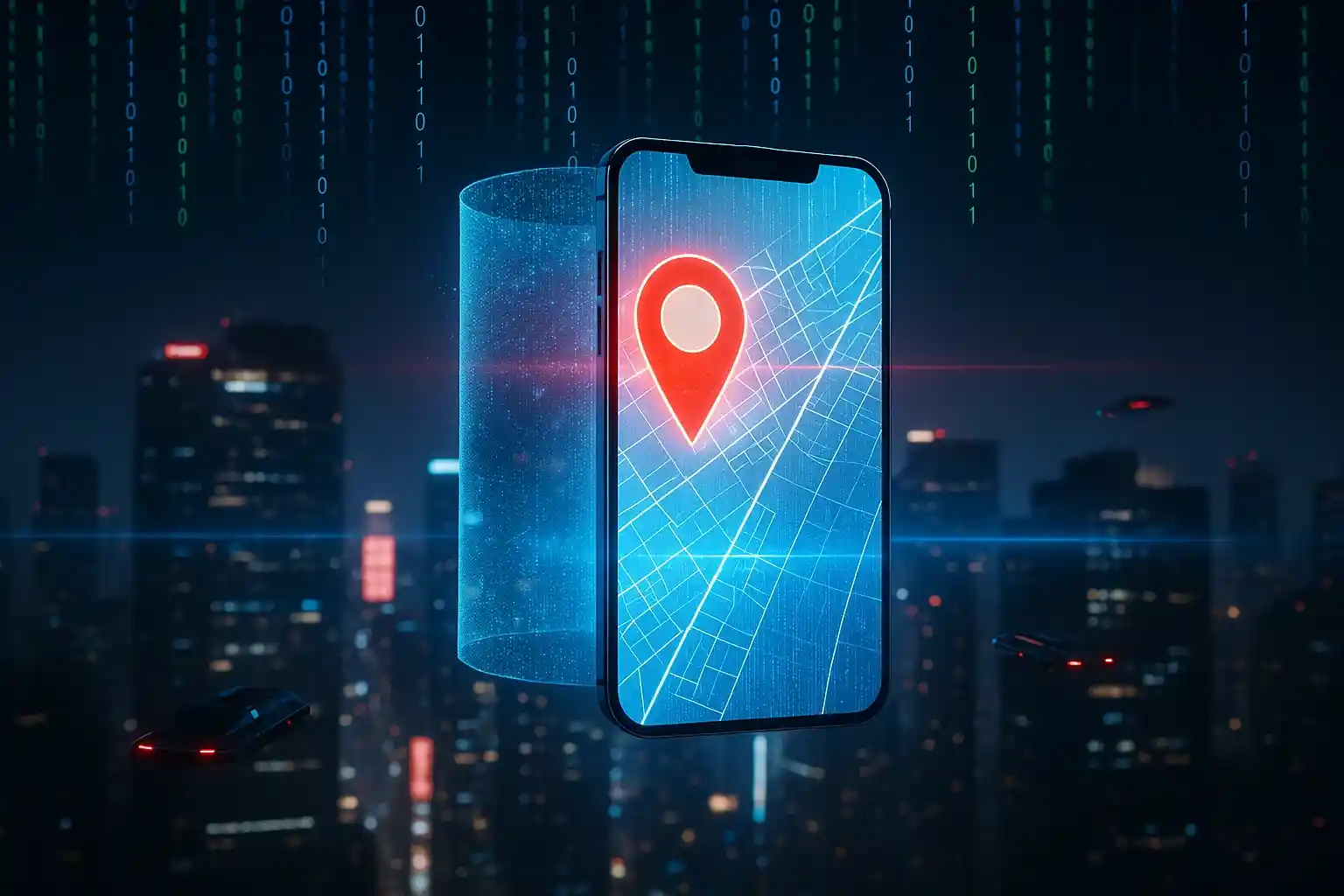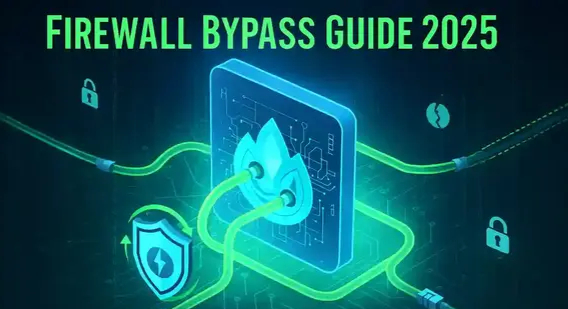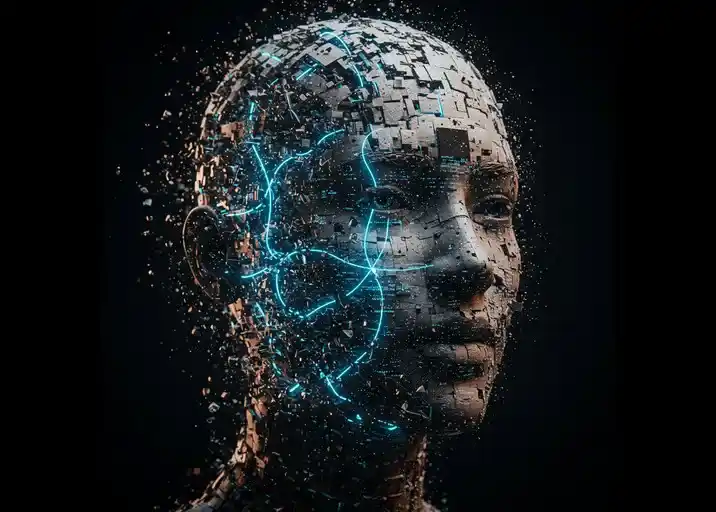The Dark Side of AI: Understanding Deepfake Dangers
Published on: March 29, 2025 |
Author: Bibek Singh
Introduction: When Technology Outpaces Truth
Artificial Intelligence (AI) has brought incredible advancements—from self-driving cars to medical breakthroughs. But like any powerful tool, it can also be misused. Deepfakes, AI-generated fake videos, images, and voices, are one of the most alarming threats emerging from AI today.
What happens when seeing and hearing is no longer enough to believe something is real? This article explores the dangers of deepfakes, how they are used for harm, and what you can do to protect yourself.
Deepfakes use deep learning (AI) to create hyper-realistic fake media by swapping faces, altering voices, or generating entirely fabricated content. They can make it appear as though someone said or did something they never did.
- Data Collection – The AI system first gathers a substantial dataset of the target individual’s real images, videos, or audio recordings. This could include public footage, social media content, or any available media featuring the person’s facial expressions, voice, and mannerisms. The more data available, the more convincing the final deepfake becomes.
- Training – Using neural networks like autoencoders or Generative Adversarial Networks (GANs), the AI analyzes the collected data to learn intricate details about the person’s appearance and behavior. It studies facial movements, voice modulation, speech patterns, and even subtle gestures. This training phase essentially teaches the AI how to realistically mimic the individual.
- Generation – Once trained, the AI can produce new, fabricated content by superimposing the learned characteristics onto different contexts or combining them with other media. For videos, this might involve face-swapping or altering lip movements to match new dialogue. For audio, it can generate speech that sounds authentic but was never actually spoken by the real person. The result is highly convincing fake content that can be difficult to distinguish from genuine recordings.
Example: A scammer clones a CEO’s voice to trick an employee into transferring company funds.
The Growing Threat: How Deepfakes Are Used for Harm
1. Fraud & Financial Scams:
The financial sector faces unprecedented threats from deepfake technology. Cybercriminals now employ AI-powered voice cloning to execute “virtual kidnapping” scams, where they mimic a child’s voice calling for help. In corporate environments, fraudsters create convincing deepfake videos of CFOs instructing urgent wire transfers, often targeting mid-level accounting staff during fiscal year-ends. Banks report cases where AI-generated ID videos bypassed Know Your Customer (KYC) verifications, enabling account takeovers. The FBI estimates deepfake-related financial fraud has increased 300% since 2021, with average losses exceeding $250,000 per incident.
2. Political Manipulation & Fake News:
Deepfakes are reshaping geopolitical landscapes by enabling next-generation information warfare. During elections, malicious actors create micro-targeted deepfake ads showing candidates insulting specific voter demographics. More alarmingly, we’ve seen fabricated videos of military leaders declaring wars or politicians announcing resignations go viral before being debunked. The 2023 Slovakian election was notably impacted by a deepfake audio of a candidate discussing election rigging, distributed just hours before polls opened. These tactics exploit the “liar’s dividend,” where real scandals can be dismissed as potential deepfakes.
3. Reputation Attacks & Blackmail:
The personal destruction potential of deepfakes has created a booming black market. Revenge porn operations now offer “deepfake-as-a-service” with packages starting at $50. Corporate extortion cases involve threat actors creating compromising fake videos of executives, then demanding cryptocurrency payments. Legal systems struggle to keep pace—while some jurisdictions have passed laws against non-consensual deepfake pornography, prosecution remains challenging across borders. The psychological impact is devastating, with victims reporting severe anxiety and employment discrimination even after fakes are exposed.
4. Social Engineering & Cybercrime:
Deepfakes have become the ultimate social engineering tool, bypassing even advanced security systems. In 2024, a Hong Kong finance worker transferred $25 million after attending a deepfake video conference with what appeared to be his colleagues. Call centers report criminals using real-time voice cloning during account recovery processes, matching voiceprints in seconds. The technology enables sophisticated spear-phishing where attackers can video-call targets while impersonating trusted contacts. Cybersecurity firms now recommend implementing “shared secrets” and multi-modal authentication to combat these threats.
How to Spot a Deepfake (Before It Tricks You)
As deepfakes improve, detection gets harder—but not impossible. Watch for these signs:
- Unnatural Facial Movements: Look for irregular blinking patterns, frozen expressions, or facial gestures that appear robotic or exaggerated.
- Lip-Sync Errors: Watch for slight delays where spoken words don’t perfectly match mouth movements.
- Distortions & Blurring : Check for unnatural smudging around facial edges, hair, or jewelry-common artifacts in AI-generated content.
- Robotic or Flat Speech: AI voices often lack natural emotional inflections or have unnatural pauses.
- Inconsistent Background Noise: Sudden audio cuts, glitches, or mismatched ambient sounds can indicate tampering.
- Source Check: Always verify if the content comes from a reputable outlet or an unverified social media account.
- Look for Inconsistencies: Compare lighting, shadows, and voice tone with the person’s usual behavior.
- Use Fact-Checking Tools: Platforms like Snopes, Reuters Fact Check, or Google Reverse Image Search help confirm authenticity.
How to Protect Yourself from Deepfake Threats
- Be Skeptical – If something seems shocking, verify before sharing.
- Secure Personal Data – Limit public photos/videos that could be used to train AI.
- Use Multi-Factor Authentication (MFA) – Prevents hackers from impersonating you.
- Educate Others – Many people don’t realize deepfakes exist.
- Support AI Regulation – Advocate for laws against malicious deepfake use.
The Future: Can We Stop Deepfake Abuse?
The fight against deepfake abuse is advancing on multiple fronts, with technology leading the charge. Companies like Microsoft and Google are developing sophisticated AI detection tools that analyze subtle inconsistencies in facial movements, voice patterns, and digital artifacts. These systems use machine learning to identify telltale signs of manipulation, though the constant evolution of generative AI means detection methods must continuously adapt to stay effective.
Legal frameworks are gradually emerging to address the malicious use of deepfakes. Several countries have introduced laws specifically targeting harmful deepfake content, particularly non-consensual intimate imagery and election-related disinformation. However, enforcement remains challenging due to the borderless nature of digital content and difficulties in tracing anonymous creators. The legal landscape is still playing catch-up with the rapid pace of technological advancement in this field.
systems could create immutable records of authentic content while flagging AI-generated material. Some platforms are already implementing content authentication standards, suggesting a potential path toward establishing trust in digital media. While complete eradication of deepfake threats is unlikely, a combination of technological innovation, legal measures, and public awareness may help mitigate their most dangerous consequences.
Conclusion: The Deepfake Crisis – Time is Running Out
We’ve crossed into dangerous territory. Deepfakes aren’t coming – they’re here, weaponizing AI to sabotage truth with terrifying precision. Each advancement makes fake videos and audio more indistinguishable from reality, empowering scammers, undermining elections, and destroying reputations overnight.
The window to act is closing. We need:
1. Mandatory watermarks on all AI-generated content – now
2. Criminal penalties for malicious deepfakes in every country
3. Media literacy drills in schools and workplaces
4. Detection tools baked into every social platform
This isn’t just about technology – it’s about survival in the digital age. Verify everything. Demand accountability. The next viral video you see could be the one that collapses trust in your institution, your leaders, or even your own eyes. The deepfake era demands war-level vigilance – and we’re already behind.

Discover how hackers, apps, and websites track your exact location through your IP, GPS, and photos.…

Learn how to bypass firewalls for security testing. Step-by-step guide with Nmap, SSH tunneling, DNS…

Discover Cursor AI – the ultimate AI-powered code editor built on VS Code. Generate, debug, and opti…

